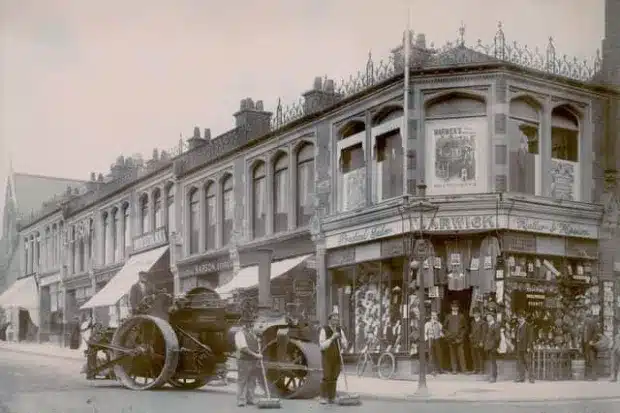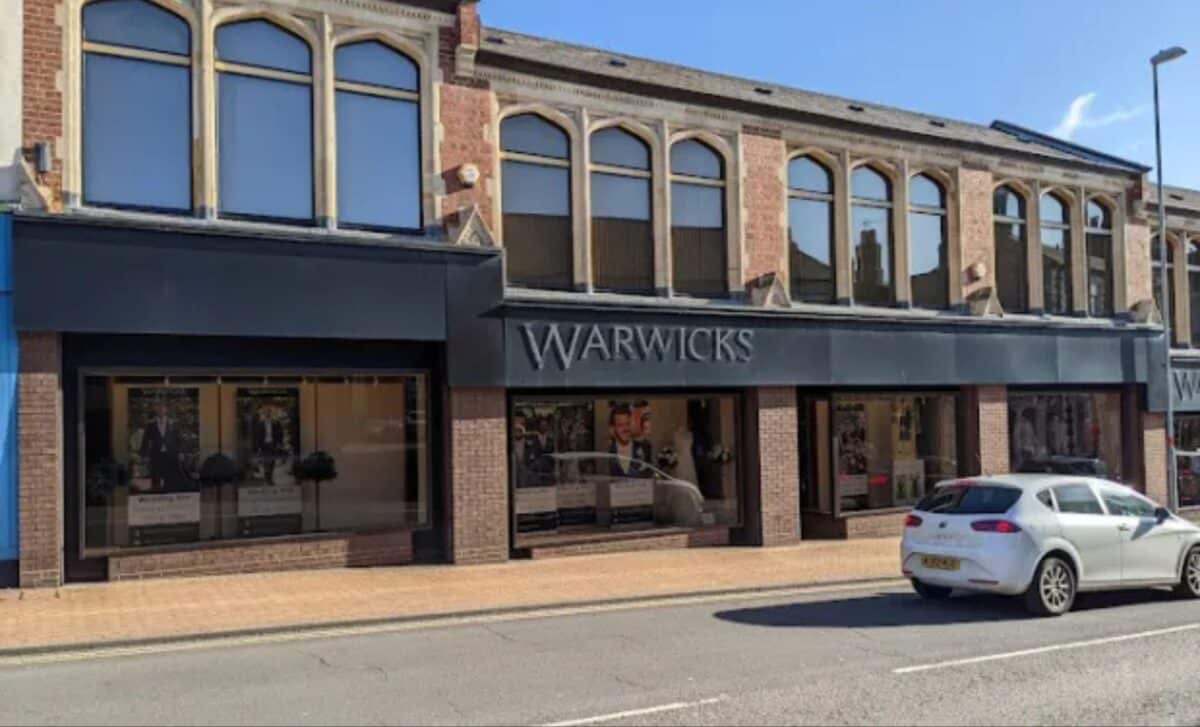A longstanding family-run store is set to close its doors for good after 157 years on the high street, marking another loss for independent retailers. Warwicks, a well-known suit shop in Wellingborough, Northamptonshire, has launched a closing down sale after failing to find a buyer, despite being on the market for over a year.
The business, which has been passed down through five generations, will shut in June this year, unless a last-minute buyer steps in. While the owner insists the shop remains financially stable, the decision to close reflects the changing landscape of the British high street and the challenges many brick-and-mortar businesses continue to face.
A Legacy Coming to an End
Warwicks was founded in 1868 by a tailor and has remained a pillar of the local community ever since. The store has seen generations of customers pass through its doors, offering tailored suits, wedding attire, and formalwear hire.
Current owner Neil Warwick, who took over 41 years ago, says the closure is not due to financial difficulties but rather a personal decision to retire. He explained:
“I’ve given a lot of my life to the shop, been here Saturdays and done the wedding fairs on Sundays. It is a bit surprising and very sad. Just this morning people have been coming in as normal. If we were going bust or had no trade it would be understandable. Trade isn’t as good as it used to be because the high street has gone down a little, but we’re still profitable.”

Final Closing Down Sale – Everything Must Go
With the closure set for June, Warwicks has launched a major clearance sale, offering 50% off all remaining stock. The sale is expected to attract both loyal customers and bargain hunters, as the historic shop winds down its business after more than a century and a half of trading.
The hire department will continue to operate until all pre-existing bookings have been fulfilled, ensuring that customers with wedding and formalwear reservations will not be left without their orders. However, no new bookings will be accepted, and once the final commitments are met, this part of the business will also close.
Neil Warwick, the store’s fifth-generation owner, reflected on the emotional and economic impact the closure will have on the town, stating: “Wellingborough is Warwicks and Warwicks is Wellingborough.” For many residents, the shop has been more than just a retailer—it has been a fixture of the community, serving families for generations. The closure marks not just the end of a business, but the loss of a local institution that has stood the test of time.
As the countdown to closure begins, the clearance sale represents the final chapter for Warwicks, giving customers one last chance to shop at the historic store before it disappears from the high street forever.
Why Are So Many Retailers Shutting Shops?
Warwicks’ closure is part of a larger trend of high street decline, as many retailers struggle to compete with online shopping and rising costs. In recent months, several big-name brands have announced store closures, including Dobbies garden centres, Homebase, and Hollister.
Retail analyst Ashley Armstrong explains that multiple factors are driving shop closures, including:
- The rise of online shopping, which has shifted consumer habits away from traditional stores.
- Rising operational costs, including wages and employer National Insurance contributions, which are set to increase by £2.3 billion across the retail sector from April 2025.
- Higher business rates and rent, making it more expensive for shops to stay open.
- Falling foot traffic on high streets, as retail parks with free parking become more attractive to shoppers.
Some retailers are relocating to better-performing areas, while others are being forced to close entirely due to financial struggles.
The Future of the British High Street
With independent stores struggling to survive and even major chains reducing their presence, the future of the traditional high street remains uncertain. While some businesses adapt by focusing on online sales or moving to retail parks, others, like Warwicks, are facing the end of an era.
As high street stores continue to disappear, communities may see lasting changes in how and where they shop, raising questions about the long-term viability of traditional retail in the UK.









